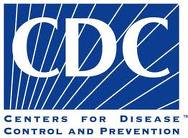cdc driving: Are you a safe driver? If you use a cell phone, text, eat and drink, or use items such as portable communications devices while you’re behind the wheel, you aren’t as safe as you think. Distracted driving is serious and life-threatening, not just to you and your passengers, but also to other drivers and pedestrians.A recent CDC analysis examined the frequency of two major distractions—cell phone use and texting—among drivers in the United States and several countries in Europe. Findings include:
Chart: Self-reported cell phone use while driving in the past 30 days. Never: 35.55%; Rarely: 34.67%; Regularly: 25.4%.
* Overall, 25% of drivers in the United States report that they talk on their cell phone “regularly” or “fairly often” while driving.
* Nearly 40% of U.S. drivers ages 18 to 29 report that they talk on their cell phone “regularly” or “fairly often” while driving.
* The percentage of EuropeanU.S. drivers who report using the cell phone “regularly” or “fairly often” while driving range from 21% in the Netherlands to 3% in the United Kingdom.
* More than a quarter of drivers ages 18 to 29 report texting or e-mailing “regularly” or “fairly often” while driving.
* The percentage of European drivers who text or e-mail while driving is higher among drivers aged 18 to 29 than other age groups—from 13% in Portugal to only 3% in the United Kingdom.
Learn more about distracted driving behaviors among U.S. and European drivers.
Driving demands our full attention. When you’re driving, keep your hands on the wheel and your eyes on the road.
Learn More
* Distracted Driving in the United States and Europe
* Motor Vehicle Safety ► CDC - Motor Vehicle Safety: "- Enviado mediante la barra Google"
▲ Distracted Driving in the United States and Europe ►
CDC Data & Statistics | Feature: Distracted Driving in the United States and Europe: "- Enviado mediante la barra Google"Ten Significant Public Health Achievements ― United States, 2001-2010: Motor Vehicle Safety
MMWR: Ten Great Public Health Achievements, United States, 2001-2010Motor vehicle crashes are among the top ten causes of death for Americans of all ages and the leading cause of death for children, teens, and young adults (aged 5-34 years).1 In terms of years of life lost, motor vehicle crashes rank third, behind only cancer and heart disease and account for approximately $99 billion in medical and lost work costs annually.1,2 Crash-related deaths and injuries are largely preventable. From 2000 to 2009, while the number of vehicle miles traveled on the nation’s roads increased by 8.5%, the death rate related to that travel declined from 14.9 per 100,000 population to 11.0 and the injury rate declined from 1,130 to 722; among children, the number of pedestrian deaths declined by 49% and the number of bicyclist deaths declined by 58%.3,4
These successes result from progress in several domains including safer vehicles, safer roadways, and safer road user behavior. Behavior was improved by protective policies including strong seat belt and child safety seat legislation; 49 states and the District of Columbia (DC) have enacted seat belt laws for adults and all 50 states and DC have enacted legislation that protects children riding in vehicles. Graduated drivers licensing policies for teenage drivers have helped bring the number of teen crash deaths down.
CDC’s role in motor vehicle safety has been to advance the science around what we know works; for example, evaluating the effectiveness of seat belt laws, child safety seat laws, child safety seat distribution and education programs, and graduated drivers licensing (GDL) policies. Next, CDC can bring public health and traffic safety professionals together to more efficiently and effectively produce further reductions in crash-related injury and death.


No comments:
Post a Comment